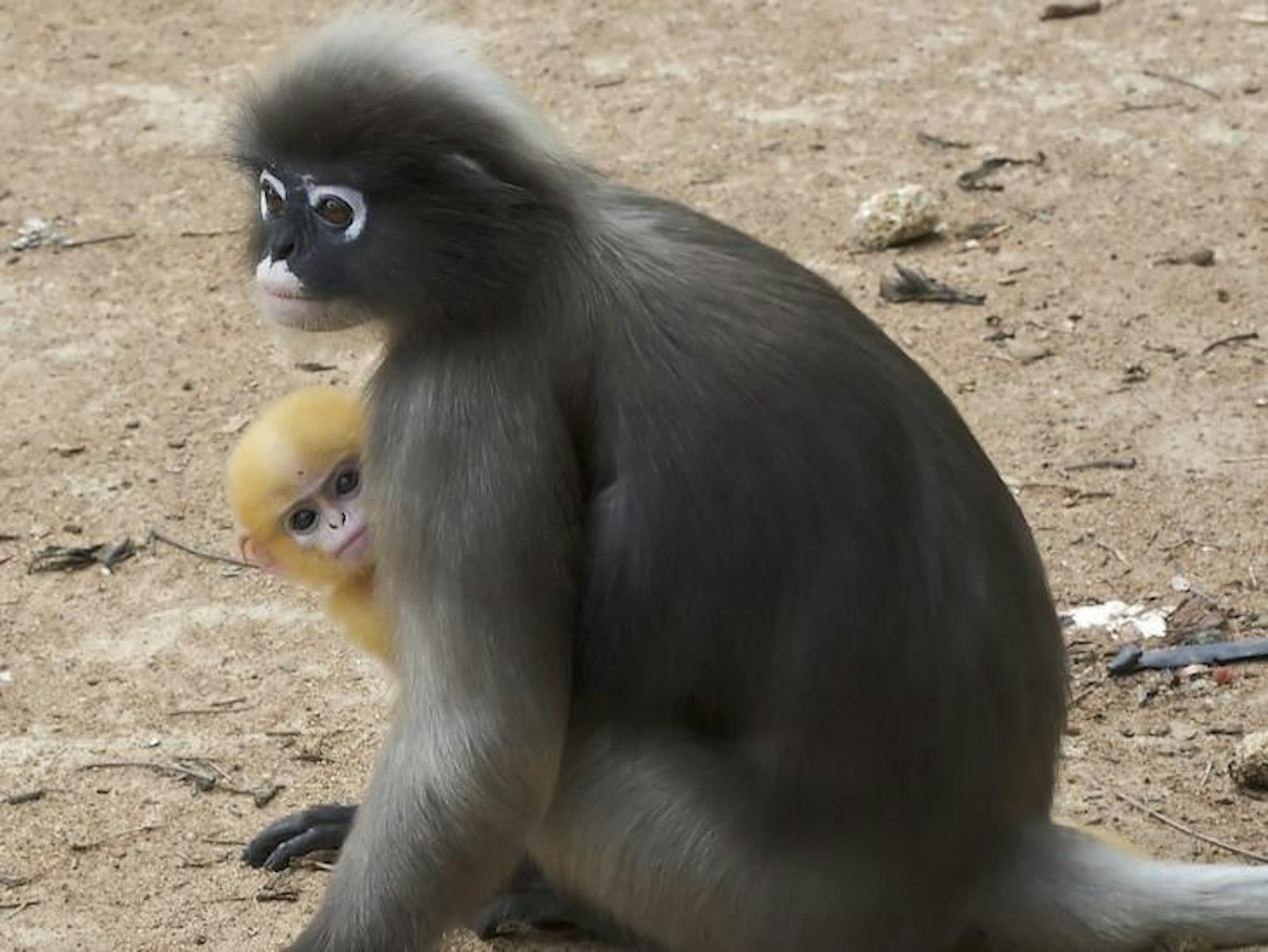There’s something morbidly fascinating about animals that seem to behave pathologically: The female praying mantis engaging in sexual cannibalism, the fish eating its own fry.
It was this sort of twisted behavior that first drew anthropologist and evolutionary biologist Sarah Hrdy (pronounced Hur-dee) to study langurs in Mount Abu, in India. The males among these large, gray-haired monkeys were killing their own colony’s infants; at the time, in the late 1960s and early 1970s, researchers thought the pressures of overcrowding were the cause. What Hrdy found, however, was that these langurs’ infanticidal tendencies were actually adaptive behavior—behavior that, she argues, one can also see in humans.
In the langur colonies she observed, infanticides were hardly indiscriminate, which is what you might expect if the killings were driven by some kind of psychological anguish. In fact, the males never attacked their own offspring, and the ones they did knock off were less than six-months old—infants that were still suckling. This led Hrdy to conclude that infanticide was an effective tactic to allow mothers to mate. They can’t mate while they’re lactating because lactation suppresses ovulation. But they stop lactating once they’re childless. Killing baby langurs increases a male’s opportunity to reproduce.
“We’ve changed the rules of human existence, but haven’t provided the tools to deal with it.”
In competitions over mates, “the result for the loser is not necessarily death but rather few or no offspring,” Hrdy says. “By eliminating the suckling offspring of previous [mates], a male langur compresses a female’s reproductive potential into the period he’ll have access to her, about 27 months on average.” Hrdy calls this “sexually selected infanticide.” “You hear me talk so cavalierly and casually about infanticide,” she says. “At first, it’s deeply upsetting. But after you study it for a long time, you distance yourself from it.” It was a controversial idea when she first proposed it four decades ago, but not any more. Scientists have learned the tactic’s common in the animal kingdom: 51 species of primates do it, as do mice, hippos, and lions.
“We as humans place such a strong moral and ethical framework around our conversation of reproduction,” says Eric Strauss, a biologist and director of the Loyola Marymount University Center for Urban Resilience, in Los Angeles. “In nature, that plays out in very different ways, and decisions [about how to treat offspring] are not necessarily conscious. They’re often built in.” Indeed, it can be disconcerting how young some animals are when they become infanticidal killers. Birds called cattle egrets, for example, often don’t have enough food to feed all their chicks, so they favor the first two ones to hatch. These two chicks then attack and kill the third-born—their parents watch, not bothering to intervene.
Maternal infanticide tends to occur in species where group members other than the mother take on a parental role for a child—where the mother is dependent on her support system. Hrdy calls this “cooperative breeding.” If a mother feels like she has no support system, or determines that the cost of raising the child alone will be too high, she’s more likely to stop being a mother.
So for marmoset and tamarin mothers—both small, tree-dwelling monkeys that frequently give birth to twins (or even triplets) weighing up to one-fifth of their body weight—the constrained resource isn’t food but access to male “babysitters.” They play an essential role in offspring care. If a mother is in the late stages of pregnancy, she’ll try to kill other infants to free up babysitters’ time. A tamarin alpha female will even kill the offspring of her own daughter—Hrdy calls them the “grandmothers from hell”—even though that infant carries her genes, too. Conversely, if a tamarin or marmoset becomes pregnant while another member of her group is already further along in a pregnancy, she’ll try to spontaneously abort or reabsorb her own fetus, knowing that it will most likely become a target to the other mother. Plus, with other infants around, she won’t get the resources she needs to care for hers.
Human mothers will also commit infanticide if they detect a lack of social support, most likely within the first few hours or a day after birth. In 2012, Andrea Ciani and Lilybeth Fontanesi, psychologists at the Laboratory of Forensic Evolutionary Psychology, at the University of Padova, in Italy, published a study titled, “Mothers who kill their offspring: Testing evolutionary hypothesis in a 110-case Italian sample.” Between 1976 and 2010, these 110 mothers killed 123 of their own offspring. Ciani and Fontanesi explain that mothers who killed their newborns had “no psychopathologies” and their acts made evolutionary sense by “saving resources for future offspring born in better conditions.”
In a paper published in January, Hrdy posits this adaptive behavior is a result of humans’ reliance on a support system. “As among other cooperatively breeding primates,” she writes, “human postpartum maternal responsiveness is unusually sensitive to cues of social support.”
“I think, because we’ve evolved as cooperative breeders, human mothers are incredibly sensitive to how much social support they’re going to have,” Hrdy says. “If you look at infanticide cases, it’s often before the mother has started nursing, before bonds are starting to develop.” Since societal norms consider infanticide and child abandonment to be reprehensible crimes, it can be uncomfortable to be confronted with the fact that evolutionary forces may be at play when a human mother abandons or kills her newborn child—but it’s nothing new. Humans have been abandoning or killing their children for reasons ranging from poverty to illegitimacy since the dawn of our species.
More often than not, “there were mechanisms in place to prevent this,” Hrdy says. “A mother would not be well-fed enough [to ovulate and conceive] unless she had the necessary social rapport. In our society, for the first time, we have something unusual: Young women able to ovulate at unnaturally early ages without social support. We’ve changed the rules of human existence, but haven’t provided the tools to deal with it.”
Jordana Cepelewicz is an editorial fellow at Nautilus.
Watch: Helen Fisher, a biological anthropologist studying casual sex, talks about the basis of romantic love.

The lead image is courtesy of Troup Dresser via Flickr.






























